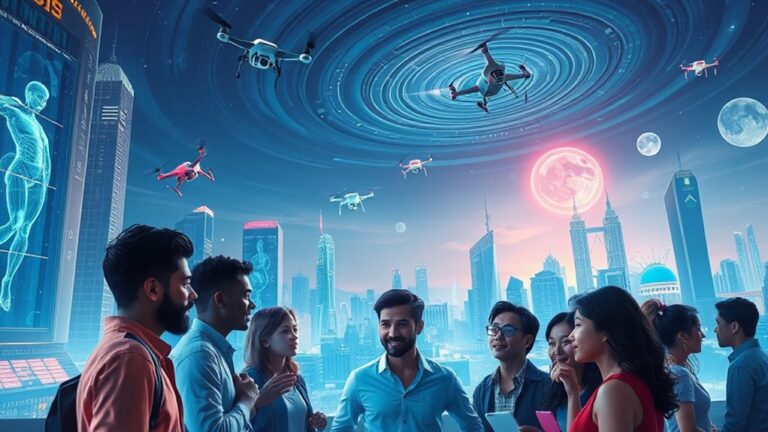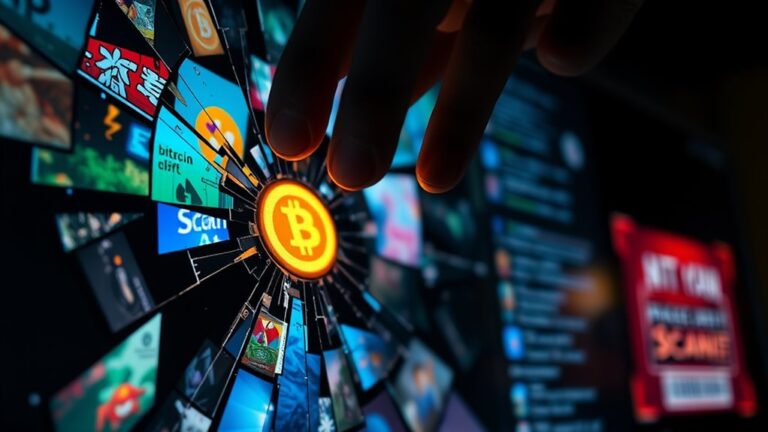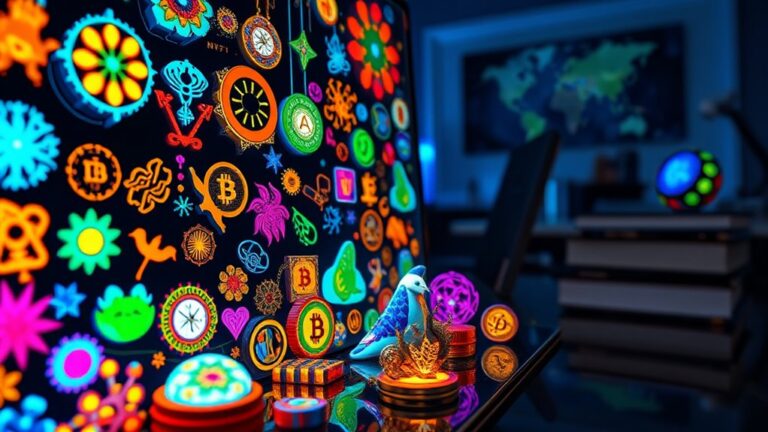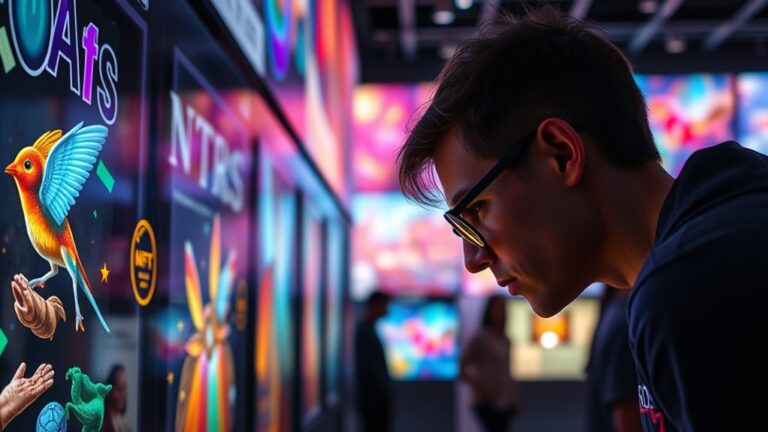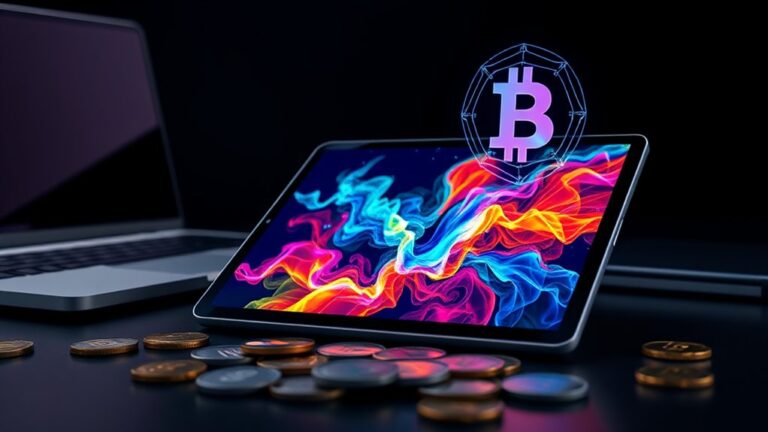
Are NFTs a Good Investment: 5 Essential Trends to Consider
NFTs are evolving, creating new investment opportunities. The rise of Bitcoin NFTs could diversify the market beyond Ethereum. There’s a growing interest in utility NFTs that offer practical value. Tokenization connects real-world assets with digital ownership, enhancing liquidity. AI integration streamlines the creation and management of NFTs. Additionally, sustainability concerns are pushing for greener practices in the industry. Understanding these trends can better inform decisions regarding NFT investments as the market continues to change.
Key Takeaways
- The rise of Bitcoin NFTs is expanding the market, attracting new users and potential cross-chain transactions.
- Utility NFTs are gaining traction, offering tangible benefits and enhancing user engagement through real-world applications.
- Tokenization of real-world assets increases liquidity and efficiency, making ownership more accessible and tradable.
- AI integration in NFT management streamlines the creation process and helps keep NFTs aligned with market trends.
- Sustainability is becoming a priority, influencing investor preferences towards energy-efficient blockchain technologies and greener practices.
The Rise of Bitcoin NFTs: Expanding Beyond Ethereum

As the cryptocurrency landscape continues to evolve, Bitcoin NFTs are emerging as a significant trend, diversifying the NFT market beyond the dominance of Ethereum.
By utilizing protocols like Ordinals, Bitcoin NFTs can expand their reach, attracting a broader user base. The potential for cross-chain compatibility may allow for smoother transactions and ownership management across different blockchain platforms.
Innovations in smart contracts could enhance security and efficiency, making Bitcoin a viable option for NFT creation. Major companies might adopt Bitcoin NFTs, similar to existing strategies on Ethereum.
This growing interest could lead to increased trading volumes and market competition, ultimately reshaping NFT dynamics and providing new investment opportunities for collectors and investors alike. Furthermore, the rise of utility NFTs is expected to create additional value propositions for Bitcoin-based assets, enhancing their appeal in the investment landscape.
The Shift Towards Utility NFTs: Functionality Over Collectibility
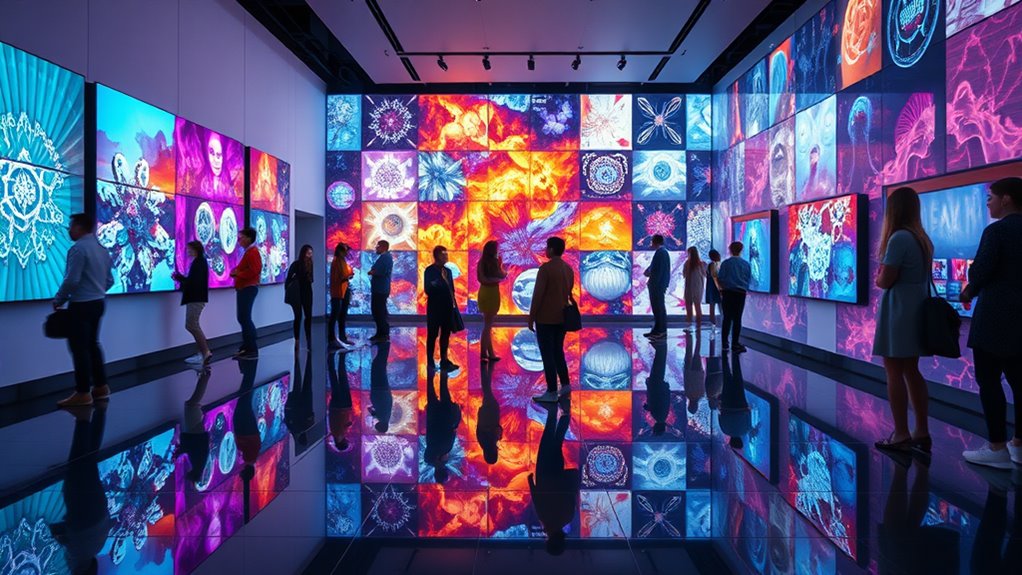
The landscape of non-fungible tokens (NFTs) is evolving, with a notable shift towards utility NFTs that prioritize functionality over mere collectibility.
These NFTs offer tangible benefits, enhancing user experiences through real-world applications. As interest grows, their practical use cases become increasingly evident.
- Exclusive access to events and memberships enhances community engagement.
- In-game assets give players ownership and trading capabilities, enriching the gaming experience.
- Verification of authenticity in luxury goods fosters trust and connection between brands and consumers.
Moreover, NFTs are making significant strides in supply chain management, allowing for enhanced product tracking and authenticity verification.
Tokenization of Real-World Assets: Bridging the Digital and Physical
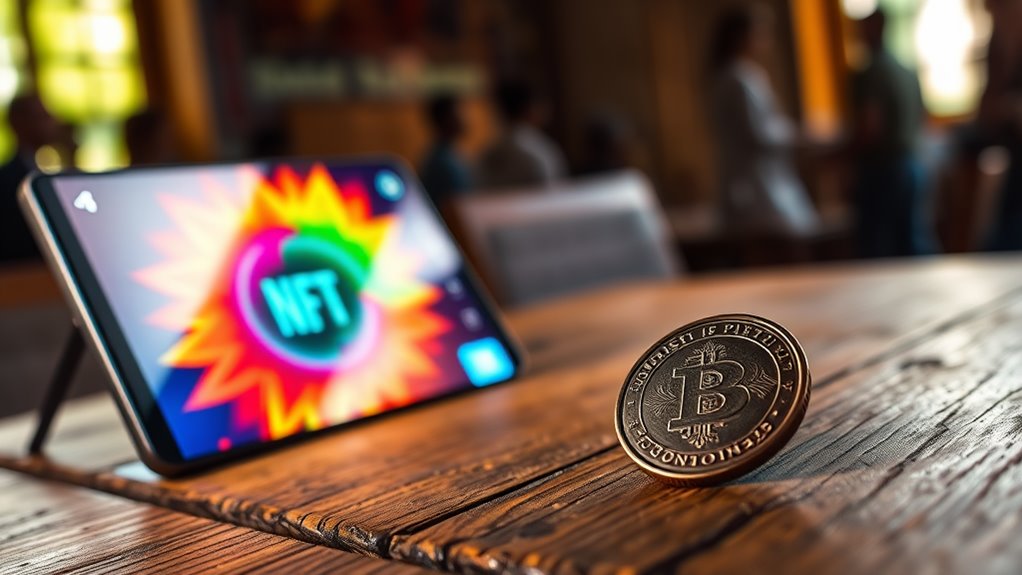
Tokenization of real-world assets represents a significant advancement in blending digital technology with traditional ownership. This process begins with asset selection, where valuable items are chosen based on market demand.
Tokenization merges digital innovation with traditional ownership, starting with the careful selection of valuable assets driven by market demand.
Next, token specifications are established, determining whether to use fungible or non-fungible tokens. Choosing a suitable blockchain network is essential for issuing these tokens, often utilizing data oracles to connect physical assets to the blockchain securely.
The issuance phase involves deploying smart contracts and minting tokens through decentralized applications. Tokenization enhances liquidity, making illiquid assets tradable, while also improving efficiency by reducing intermediaries.
Additionally, it provides transparency through auditable ownership records and facilitates broader access to investments, ultimately enabling innovative financial products that bridge the digital and physical domains. This evolution is part of the broader trend of transforming industries through blockchain technology, which promises significant efficiencies and innovations across multiple sectors.
The Impact of AI Integration on NFT Creation and Management

Integrating artificial intelligence (AI) into the creation and management of non-fungible tokens (NFTs) has transformed the landscape of digital assets.
AI enhances efficiency by streamlining the minting process, allowing for rapid creation and verification. It enables procedural generation, resulting in infinite variations of digital art, thereby expanding creative horizons.
Additionally, AI-driven tools increase accessibility for creators, allowing those without specialized skills to participate in the NFT market.
- Automated customization leads to unique user experiences.
- AI-powered analysis keeps NFTs relevant to evolving tastes.
- Enhanced security measures protect against fraud, ensuring trust in the marketplace.
Furthermore, AI can assist in determining the value of NFTs based on market forces, which is crucial for both creators and investors.
These advancements not only improve the quality of NFTs but also foster a more engaging environment for both creators and collectors.
Emphasis on Sustainability: Quality Over Quantity in the NFT Market

How can the NFT market adapt to contemporary environmental concerns while maintaining its innovative spirit? A growing emphasis on sustainability is reshaping investor preferences, favoring quality over quantity. The shift includes the adoption of energy-efficient blockchain technologies, such as proof-of-stake, and eco-friendly minting processes. Regulatory frameworks are also evolving to address environmental issues, enhancing public perception. The creation and transfer of NFTs significantly contribute to substantial carbon emissions, necessitating a move towards greener practices.
| Focus Area | Impact |
|---|---|
| Environmental Impact | Reduced carbon footprints |
| Utility-Driven NFTs | Tangible benefits for investors |
| Long-Term Value | Stability over speculation |
This focus allows NFTs to provide lasting value, appealing to a more environmentally conscious market while fostering innovative applications across various industries.
Frequently Asked Questions
How Can I Safely Buy and Store NFTS?
To safely buy and store NFTs, utilize secure marketplaces, verify authenticity, and understand smart contracts. Employ Web3 wallets for storage, guarantee private key security, and consider decentralized storage for long-term accessibility of NFT assets.
What Are the Tax Implications of NFT Investments?
Approximately 28% of NFT transactions may qualify as collectibles, facing higher tax rates. Understanding the nuances of NFT taxation, including capital gains and reporting requirements, is essential for investors steering through this evolving digital asset landscape.
Are NFTS a Bubble Waiting to Burst?
The NFT market exhibits characteristics of a bubble, marked by high speculation, inflated valuations, and market saturation. Recent declines in interest and trading volume suggest potential instability, raising concerns about a possible burst in the near future.
How Do I Determine the Value of an NFT?
To determine an NFT’s value, one should assess its rarity, utility, and ownership history, while considering market trends, comparable sales, and expert appraisals. These factors collectively influence the perceived worth in a fluctuating market.
What Platforms Are Best for Trading NFTS?
In the vast digital wilderness of NFTs, OpenSea reigns supreme, trailed closely by Magic Eden’s low fees. Rarible empowers creators, while Blur caters to pros, making each platform uniquely advantageous for trading enthusiasts.
Conclusion
In summary, the NFT landscape is evolving, influenced by trends such as the rise of Bitcoin NFTs, the demand for utility, and the tokenization of real-world assets. As these developments unfold, investors must navigate this complex terrain, much like Odysseus charting a course through uncharted waters. Understanding the implications of AI integration and sustainability will be essential for making informed investment decisions. As the market matures, adaptability and insight will be key to success in the NFT space.


